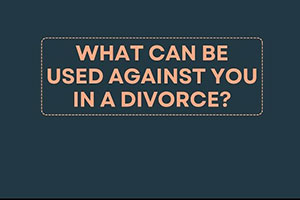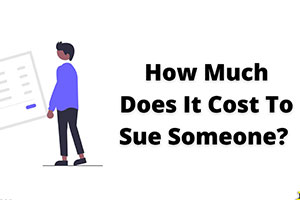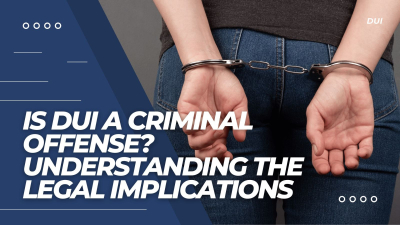Violent Felony: Definition, Examples, and Legal Consequences
Criminal Law | by
A violent felony is a category of criminal offense characterized by the use or threat of physical force against another person, often resulting in serious harm or death. Violent felonies are distinguished from non-violent felonies based on the nature of the offense and the presence of violence, force, or a threat to human life.
In federal law, the definition of a violent felony is established in the Armed Career Criminal Act (ACCA), 18 U.S.C. § 924(e)(2)(B), which defines a violent felony as a crime that:
- “Has as an element the use, attempted use, or threatened use of physical force against the person of another,” or
- “Is burglary, arson, or extortion, involves the use of explosives, or otherwise involves conduct that presents a serious potential risk of physical injury to another.”
This definition guides the categorization of violent felonies at both federal and state levels. It encompasses a range of offenses, including those explicitly involving violence and those that carry a high risk of violence or harm to others.
Common Examples of Violent Felonies
Violent felonies encompass a wide array of criminal offenses, each with varying degrees of severity and consequences. The following are common examples of violent felonies:
- Murder: The unlawful killing of another person with intent or malice aforethought. This includes first-degree murder (premeditated) and second-degree murder (without premeditation).
- Manslaughter: Unlawful killing without malice aforethought, including voluntary and involuntary manslaughter. This category includes killings resulting from negligence or reckless conduct.
- Assault and Battery: Assault involves the threat of violence, while battery involves actual physical contact or harm. Felony assault and battery occur when serious harm is inflicted or when a deadly weapon is used.
- Robbery: The taking of property from another person through force or threat of force. Robbery is considered a violent felony due to the inherent risk of harm to the victim.
- Sexual Assault: Non-consensual sexual contact or behavior, including rape and sexual battery. These offenses are classified as violent felonies due to the use of force or coercion.
- Arson: The intentional setting of fires with the potential to cause harm to others. Arson is a violent felony due to the high risk of injury or death.
These examples represent a range of violent felonies, each carrying distinct legal consequences based on the specific circumstances and severity of the offense.
Legal Consequences of Violent Felonies
Violent felonies carry significant legal consequences, often involving severe penalties such as lengthy prison sentences, fines, and other sanctions. The legal consequences of violent felonies depend on several factors, including the nature of the crime, the severity of the offense, and the defendant’s prior criminal history.
- Prison Sentences: Violent felonies typically result in substantial prison sentences, often ranging from several years to life imprisonment. In some cases, particularly for first-degree murder, the death penalty may be applicable.
- Fines: Courts may impose fines as part of the sentence for a violent felony. The amount varies based on the offense and jurisdiction.
- Mandatory Minimum Sentences: Certain violent felonies are subject to mandatory minimum sentences, requiring a minimum term of imprisonment without the possibility of early release. This is common in cases involving the use of firearms or repeat offenders.
- Parole and Probation Restrictions: Upon release, individuals convicted of violent felonies may face strict parole or probation conditions. These conditions can include regular check-ins with parole officers, restrictions on travel, and mandatory participation in rehabilitation programs.
- Loss of Rights and Privileges: A conviction for a violent felony can result in the loss of certain rights and privileges, such as the right to vote, own firearms, or hold certain professional licenses.
The legal consequences of violent felonies reflect the seriousness of these offenses and the potential harm they cause to individuals and society. Defendants facing violent felony charges should seek experienced legal counsel to navigate the complexities of the criminal justice system and understand the potential penalties they face.
Factors Influencing Sentencing for Violent Felonies
Sentencing for violent felonies is influenced by a range of factors, including the severity of the crime, the defendant’s criminal history, and the presence of aggravating or mitigating circumstances. Judges rely on sentencing guidelines and statutes to determine appropriate penalties, taking into account these influencing factors.
- Severity of the Crime: The nature and seriousness of the violent felony play a significant role in sentencing. For instance, first-degree murder typically carries more severe penalties than manslaughter. The level of harm inflicted on the victim also impacts sentencing decisions.
- Criminal History: A defendant’s prior criminal record can influence the severity of the sentence. Repeat offenders or individuals with a history of violent crimes are likely to receive harsher penalties.
- Use of Weapons: The use of weapons, especially firearms, in the commission of a violent felony often leads to increased penalties. Many jurisdictions impose mandatory minimum sentences for crimes involving firearms.
- Aggravating Circumstances: Factors that exacerbate the crime, such as premeditation, extreme violence, or multiple victims, can lead to enhanced sentencing. Aggravating circumstances typically result in longer prison terms or additional fines.
- Mitigating Circumstances: Conversely, mitigating circumstances may lead to reduced sentencing. These can include a defendant’s lack of prior criminal history, expressions of remorse, or cooperation with authorities.
- Victim Impact Statements: Victims or their families often provide statements describing the impact of the crime on their lives. These statements can influence sentencing by highlighting the emotional and physical toll of the violent felony.
Given the broad range of factors influencing sentencing, the outcome of violent felony cases can vary significantly. Judges are tasked with balancing these factors to determine an appropriate sentence within the framework of applicable laws and guidelines.
Defense Strategies for Violent Felonies
Defense strategies for violent felonies are designed to either negate the prosecution’s case or mitigate the severity of the charges and sentencing. Defense attorneys employ various tactics to defend clients accused of violent felonies, depending on the specifics of the case.
- Lack of Evidence: A common defense strategy is to challenge the sufficiency of the prosecution’s evidence. Defense attorneys may argue that the evidence does not meet the required standard of proof beyond a reasonable doubt.
- Self-Defense: In certain violent felony cases, defendants may claim self-defense. This strategy involves demonstrating that the defendant acted to protect themselves or others from imminent harm, provided that the force used was reasonable and proportionate to the threat.
- Mistaken Identity: Defense attorneys may argue that the defendant was not the person who committed the crime, using alibis, witness testimony, or other evidence to establish an alternate narrative.
- Violation of Constitutional Rights: Defense attorneys may challenge the legality of the prosecution’s evidence-gathering methods, alleging violations of constitutional rights such as unlawful searches and seizures or coerced confessions. Evidence obtained in violation of constitutional rights may be excluded from the trial.
- Plea Bargaining: In some cases, defense attorneys may negotiate a plea bargain with the prosecution, agreeing to a lesser charge or reduced sentence in exchange for a guilty plea. This strategy can help avoid the uncertainty and expense of a trial while potentially reducing the severity of the sentence.
Defense strategies are developed based on the specifics of the case, the available evidence, and the defendant’s goals. Experienced legal counsel is crucial in devising effective defense strategies for violent felonies.
Rehabilitation and Reintegration After Violent Felony Convictions
Rehabilitation and reintegration programs play a critical role in supporting individuals convicted of violent felonies as they reenter society after serving their sentences. These programs aim to reduce recidivism rates, promote positive behavior change, and help former offenders reintegrate into their communities.
- Rehabilitation Programs in Prison: Many correctional facilities offer rehabilitation programs designed to address the underlying issues that contribute to violent behavior. These programs can include substance abuse treatment, anger management, education, and vocational training.
- Parole and Probation Services: Upon release, individuals convicted of violent felonies are often placed on parole or probation. These services provide ongoing supervision and support to help individuals reintegrate into society while ensuring compliance with legal requirements.
- Community Reentry Programs: Community-based organizations offer reentry programs to support individuals transitioning from prison to society. These programs can include job placement services, housing assistance, and counseling to address the challenges of reintegration.
- Restorative Justice: Some jurisdictions offer restorative justice programs, allowing offenders to make amends with victims and the community. This approach emphasizes accountability, healing, and community-based solutions.
Rehabilitation and reintegration are essential components of the criminal justice system, aiming to reduce the likelihood of re-offending and promote positive contributions to society. While individuals convicted of violent felonies face significant challenges in reentering society, these programs offer pathways to rehabilitation and successful reintegration.
Recidivism Rates for Violent Felonies
Recidivism refers to the tendency of a convicted criminal to re-offend or relapse into criminal behavior after serving a sentence. In the context of violent felonies, recidivism rates are a key metric used by the criminal justice system to evaluate the effectiveness of rehabilitation programs and sentencing guidelines. The U.S. Department of Justice, through the Bureau of Justice Statistics (BJS), regularly studies recidivism rates among various categories of offenders, including those convicted of violent felonies.
Recidivism rates for violent felonies are influenced by several factors, including the nature of the original offense, the length of incarceration, the availability of rehabilitation programs, and the support structure in place during and after release. According to BJS reports, recidivism rates among violent offenders can be lower compared to non-violent offenders, suggesting that individuals convicted of violent felonies may be less likely to re-offend upon release . However, this varies based on the type of violent felony, with certain crimes, such as robbery or assault, having higher recidivism rates than others, like homicide.
Recidivism rates are measured in terms of re-arrest, reconviction, or return to prison within a certain time frame after release. Typical time frames used in studies range from three to five years, providing a standardized measure to assess the likelihood of re-offending.
Reducing recidivism among individuals convicted of violent felonies is a primary goal of the criminal justice system. Effective rehabilitation programs, community support, and targeted reentry strategies are all critical components in addressing the root causes of recidivism and lowering rates over time.
Conclusion: The Impact of Violent Felonies
Violent felonies have a profound impact on individuals, families, and society at large. The consequences of violent crimes can be devastating, leading to loss of life, physical harm, and emotional trauma for victims and their loved ones. The societal impact includes increased fear and insecurity, as well as significant costs associated with law enforcement, prosecution, and incarceration.
The legal system’s approach to violent felonies reflects the gravity of these offenses. The sentencing guidelines and severe penalties underscore the desire to deter violent crime and ensure justice for victims. Additionally, the rehabilitation and reintegration efforts aim to reduce recidivism and foster a safer society.
Given the complex and far-reaching effects of violent felonies, law enforcement, the judiciary, and community organizations must work collaboratively to address both the prevention and consequences of these crimes. This includes effective policing, fair and consistent legal proceedings, and robust support for victims.
Ultimately, the ongoing efforts to combat violent felonies and reduce their impact rely on a multifaceted approach that balances punitive measures with rehabilitative and preventive strategies. The success of these efforts will determine the extent to which society can effectively reduce the occurrence and impact of violent felonies.
References
- “Violent Felony Definition.” U.S. Department of Justice.
- “Sentencing Guidelines for Violent Felonies.” United States Sentencing Commission.
- “Examples of Violent Felonies.” Legal Information Institute (LII), Cornell Law School.
- “Rehabilitation and Reintegration Programs.” U.S. Bureau of Prisons.
- “Public Defender Services in the U.S.” U.S. Department of Justice.
- “Recidivism Rates for Violent Felonies.” National Institute of Justice.










